Archived Why SERVPRO Blog Posts
Water in Home: How To Clean Wet Items
6/13/2022 (Permalink)
 Clean Wet Items with the help of our Professionals.
Clean Wet Items with the help of our Professionals.
Whenever you have water in home it isn't just the structure of your home you have to worry about. You must also deal with all of your water-damaged belongings. Some water-damaged items must be replaced; however, if you use the correct techniques, some items can be saved.
Restoring Water-Damaged Items After Water in Home
It is important to act fast when you have water damage in your home. Within 24-48 hours mold and mildew can develop. Restoring your damaged property is a multi-step process:
1. Stop the Water
If the source of your water problem is a broken pipe or another leak, take steps to stop the water before you move on to drying out your property. You may need to shut off your home's water supply or board up or put a tarp over leaks while you wait for repairs.
2. Prioritize
Because it becomes more difficult to restore your property the longer it remains wet, start with the most important and fragile items first. Begin with any important documents, photographs and artwork you want to save. Next, sort through clothing and fabrics. Finally, examine appliances, furniture and electronics.
3. Start Indoor Air-Drying
If the weather isn't too humid, open the doors and windows of your home to increase air circulation. Set up fans and dehumidifiers to assist with the drying process.
4. Dry Papers and Photos
Spread papers out on top of clean, absorbent materials. As the papers dry, change out the towels or pads you are using to dry them. Gently rinse photographs with clean water and allow them to air-dry on plastic screens or paper towels.
Insert paper towels between the pages of books and then stand the books upright with the pages fanned open to dry. If you can't immediately begin drying papers, photos and books, you can slow down the damage by placing them in plastic bags in the freezer.
5. Call a Professional
Most artwork needs professional restoration services. You may also want to consider contacting a restoration service in Clearfield, UT, to help you restore any particularly valuable documents or photographs.
6. Clean Clothing and Other Fabrics
Brush any dirt and debris off fabrics that require dry cleaning and then take them to the dry cleaner. Run a full cycle using chlorine bleach, detergent and hot water to clean and disinfect your washing machine.
Rinse debris and mud from your damaged clothing and fabric items with a water hose. Use cold water and a heavy-duty detergent to run a pre-wash cycle. Wash clothing and fabrics in the hottest water that is safe for the material. If items still have dirt or stains, try washing them again.
7. Wash and Dry Wood Furniture
Use a hose to rinse your wood furniture and then apply wood alcohol or turpentine to prevent mold. Allow wood furniture to dry inside your home if possible. Placing wood furniture in the sun can cause it to warp. Upholstered furniture can be difficult to save. You may want to allow a restoration company to clean these items.
Despite your best efforts, you probably will not be able to save all of your belongings that have been damaged by water in home. However, if you take the proper steps you can save some items.
Can Wet Materials Be Salvaged?
6/7/2022 (Permalink)
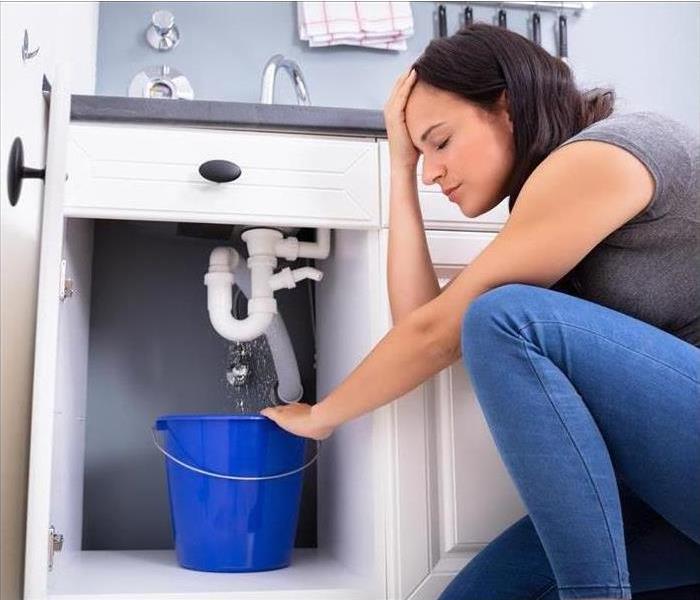 Avoid further damage in your Clearfield, UT property by following our Tips.
Avoid further damage in your Clearfield, UT property by following our Tips.
Routine home maintenance is a good way to identify a water loss. If a sudden loss occurs in your clients' home in Clearfield, UT, however, it can cause a lot of damage such as swelling wood in a short amount of time. The water restoration experts you recommend to your clients can lower the cost of their claim by identifying materials that can be dried rather than replaced.
Identifying Contamination Level
One factor that determines whether materials must be torn out is the level of bacteria present in the water. There are three main levels of contamination that can occur in homes:
- Category 1 - clean water from a pipe or supply line
- Category 2 - dirty water from an appliance leak
- Category 3 - contaminated water from sewage or storm flooding
The cleaner the water, the more likely it is that affected materials will be able to be saved. For example, wet drywall can usually be dried thoroughly. If, however, the wall is also laden with bacteria, it may need to be torn out and replaced, which will likely result in a higher claim cost.
Determining Saturation Level
Hardwood floors are particularly susceptible to water damage. Swelling wood or buckling floorboards are both telltale signs that the flooding has damaged the floor beyond repair. In addition to quick water pipe repair, early detection is the key to minimizing the risk of this happening. The longer standing water sits on the floor, the more damage it causes. When you make SERVPRO a preferred vendor, you can rest assured that the technicians will arrive in a timely manner so that they can catch water damage before it goes too far.
Your clients may not be able to avoid replacing swelling wood or contaminated materials, but a lot of water damage can be repaired if they catch it early enough. Referring them to reliable mitigation experts reduces their claim and thus your payout.
How To Minimize Water Damage After a Burst Pipe
6/7/2022 (Permalink)
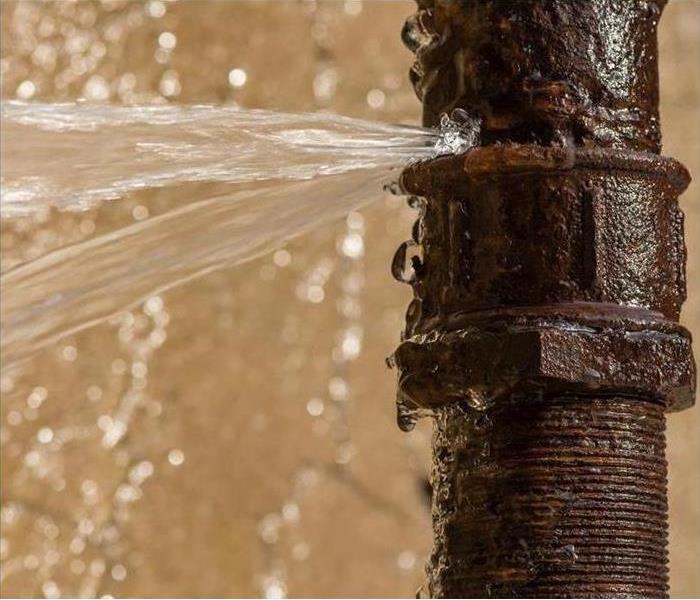 Trust the professionals and Minimize Water Damage.
Trust the professionals and Minimize Water Damage.
Discovering a broken pipe in your Clearfield, UT, commercial building can be an anxiety-provoking event. Seeing standing water inside might have you in a panic, wondering what to do next. You probably won't be able to prevent water damage after a pipe burst, but there are steps for keeping it to a minimum.
- Shut Off the Building's Main Water Supply
First, you need to shut off the building's water supply at the main valve to stop the influx. This action will minimize the flooding and standing water as much as possible.
- Examine the Area for Damage
After you've stopped the water flow, it's essential to examine the area thoroughly. Be sure to locate all the affected areas and materials.
- Extract the Water
Next, the standing water inside needs to be removed as quickly as possible. Every minute counts when it comes to a moisture problem, whatever the size. Typically, the most efficient way of extracting standing water is by using a wet/dry vacuum. It can safely and quickly remove the liquid and smaller floating debris.
- Dry the Area
You must dry the area thoroughly after water pipe cleanup. The more prolonged moisture lingers in the area, the more damage will occur from water and mold growth. Mold can begin growing within 24 hours of water contact, so it's essential to dry it as quickly as possible. Use dehumidifiers, fans, heat, and open windows and doors.
- Contact Professionals
After a pipe burst of any size, it's most beneficial to call professionals, such as plumbers and flood damage restoration professionals. They'll thoroughly inspect the area and repair any damage, from the broken pipe itself to mold remediation.
Flowing water inside your building is never a good thing if it's due to a broken pipe. You can't always prevent these occurrences, but knowing what to do beforehand helps minimize the loss.
When Is a Flooded Basement Covered by Insurance
4/21/2022 (Permalink)
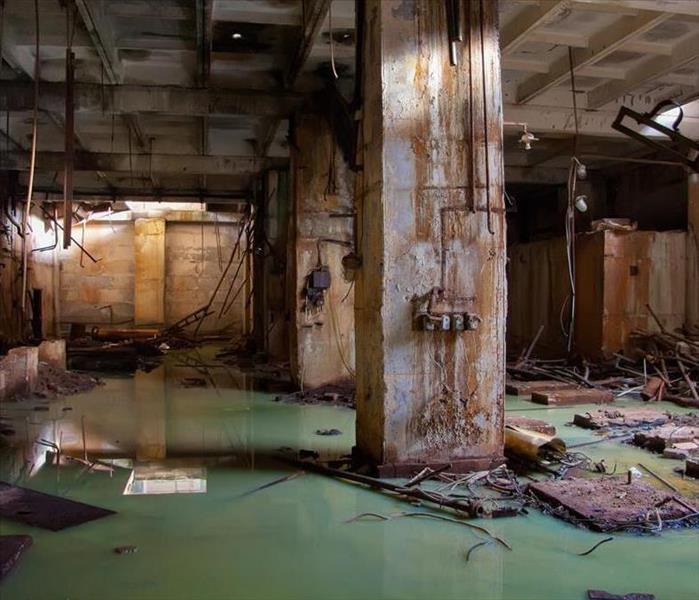 Learn when your Flooded Basement is Covered by Insurance by following these tips.
Learn when your Flooded Basement is Covered by Insurance by following these tips.
Did you walk downstairs to find a basement flood? You may stare in wonderment, questioning what your next move should be and whether insurance can help you recover from this damp, extensive situation. Your insurer may assist. However, rest assured there is someone to stand by your side. SERVO restoration professionals in Clearfield, UT, react swiftly within 24 hours to deliver prompt attention and aid.
Our team cleans up and informs while you work with insurance to determine if the basement's damage is covered. That leaves you time to work through a claim. The following are times when your insurer may or may not deem the flood under the policy.
1. How Did the Basement Flood?
Most insurance policies do not cover floods. This coverage requires a separate policy or add-on clause, especially for those living within flood-prone zones. General liability and property insurance claim does not handle it. However, there are exceptions to the rule. Insurers focus on water sources and maintenance.
For instance, a flood centers on water masses, leaving a larger body such as an ocean, lake or river. When these overflow and push water into a residence, the insurer will likely deny the claim. In these circumstances, the water enters from the ground level.
However, insurance agents can view basement flooding as secondary damage, harm caused by something else. For instance, did the puddles appear because of a bad septic tank, broken pipe or leaking water heater? These events triggered water damage. The water came from above the floor, saturating it because of a faulty part or device. In these cases, the agent may approve a claim.
A water remediation team can assess the source, documenting the origin and secondary effects. This information may prove helpful in conversations with the agency, determining approval for insurance coverage.
2. Homeowners Were Not Aware of a Problem
Did you know the source existed? For instance, some owners may consider a leak minor, choosing to handle it down the road. However, this choice could jeopardize the claim. The agent needs to know that it has happened quickly and without the owner knowing the potential for trouble.
Water heaters can face buildup and corrosion, eventually leading to significant breaks and flooded rooms. This negligence could open questions about whether homeowners knew the device's weakness. It's essential to prove through an inspection that the breach could not have been prevented and that the owners had no knowledge of its existence.
3. You Continue To Maintain Inspections and Repairs
Ready yourself to validate your attention to plumbing maintenance and repairs. The insurer may ask when you last had it inspected or repaired. It's best to continue regular checkups on water lines and units. If something goes wrong, owners may show the receipts and invoices as documentation of routine care. This reasonable faith effort could help gain approval.
Insurance might help with your basement flood. It depends on where the water came from and how well owners can prove it was accidental and quick. Throughout this process, rely on SERVO franchise experts to assist in the cleanup and document the event for you.
What Happens to Building Materials When They Get Wet?
3/7/2022 (Permalink)
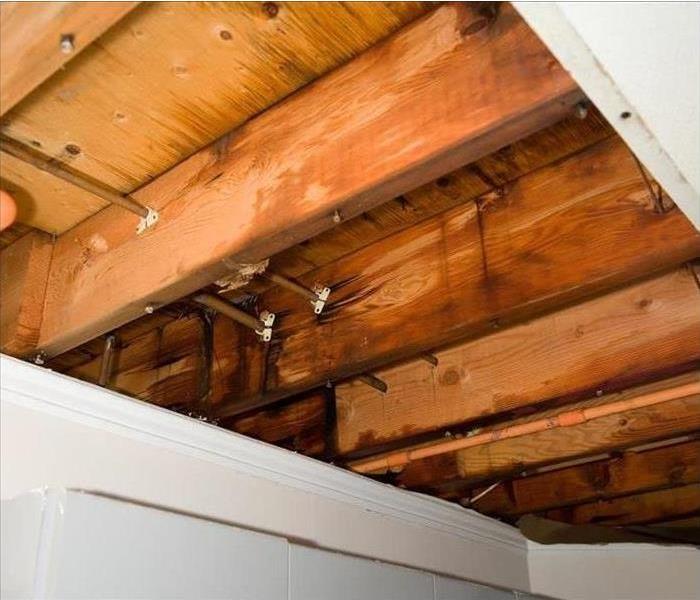 Follow these Tips and learn more about What Happens to Building Materials When They Get Wet.
Follow these Tips and learn more about What Happens to Building Materials When They Get Wet.
A home flood is nothing to take lightly. However, most people don't realize just how deep the waters can flow. No matter what type of water is infiltrating your home, swelling wood and wet drywall are just two types of potential underlying structural damage. Destruction will increase with every moment moisture lingers in the house.
It's vital to begin the remediation process as quickly as possible to avoid the following types of damage:
Types Of Damage Due to Flooding
- Drywall
Flooding will often damage drywall because it's a porous material and wicks the water up like a sponge. The drywall will then become frail or may even begin to crumble. If the entire wall hasn't suffered damage, you can cut out and replace only the affected areas.
- Insulation
Water-soaked drywall can easily lead to water-damaged insulation. You'll have to replace it, but only after work like water pipe repair has been completed and after the structure is dried thoroughly.
- Wood
Waterlogged wood immediately begins expanding. Swelling wood can create various problems that are at risk of affecting your home's structural integrity. If you notice cracking around your door jambs or have trouble closing some of your doors that used to shut easily, it's a sign that your house's frame is enduring an extreme amount of pressure. Ignoring the issue can eventually lead to severe foundation problems.
- Mold
Mold can begin growing within 24 hours of moisture exposure. Therefore, you must begin cleaning and drying the area immediately. If you suspect the water has been there for more than 24 hours, hiring water damage restoration specialists is highly recommended. They can investigate for mold and follow proper procedures for safe removal.
- Electrical Systems
Water can severely damage your electrical system. You may have outlets that don't work or ones that frequently short circuit. These problems can be a fire hazard, so it's crucial to get your electrical system inspected and repaired immediately.
If your Clearfield, UT, home floods, whether from a ruptured supply line or heavy rainfall, the resulting loss will essentially be the same. Specialists must inspect the home for damage such as swelling wood to ensure its structural integrity.
How To Handle a Leaky Faucet
11/24/2021 (Permalink)
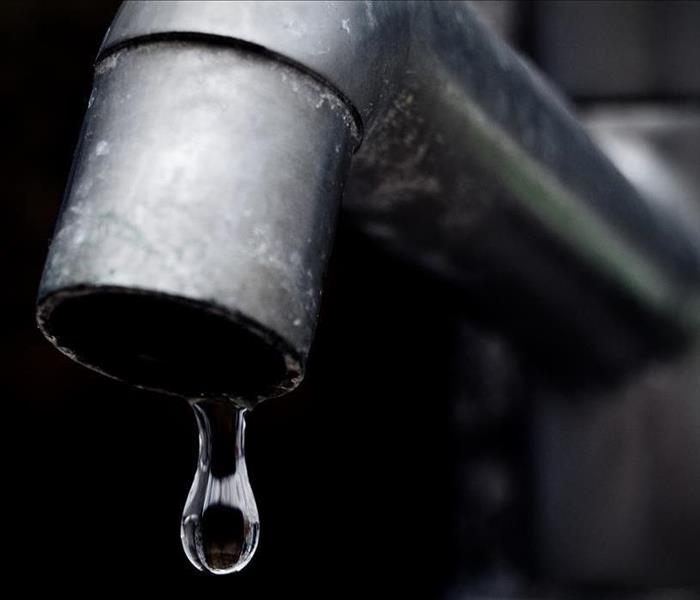 Repair your leaky faucet as soon as possible to avoid water damage in your Clearfield, UT home.
Repair your leaky faucet as soon as possible to avoid water damage in your Clearfield, UT home.
A leaky faucet may seem like a minor annoyance, but it can cause a spike in the utility bill as well as significant water damage if it is allowed to persist. Knowing how to fix a leaking faucet, therefore, is a useful skill for homeowners in Clearfield, UT. Here are some simple steps to follow to ensure that you do the job correctly.
3 Steps to Handle a Leaky Faucet
1. Repair Water Damage
A dripping faucet is likely a sign of a mechanical problem, and that means the water may not just be dripping into the sink and flowing safely down the drain. Faucet repair should start with assessing the damage to the surrounding cabinet. If there is a problem, call local water restoration professionals such as SERVPRO. SERVPRO is a preferred vendor for many insurance companies for several reasons:
- 24-hour emergency response
- Certified technicians
- Service warranties
- Easy-to-access Claims Information Center
To fix the issue, technicians must turn the water off to the faucet. Then they tear out damaged materials and rebuild the cabinet. Once the damage is repaired, it's time to fix the faucet to prevent future problems.
2. Identify the Problem
There are many issues that can cause a leaking faucet. In a compression faucet, the seat washer may need to be replaced. A ball faucet includes various components such as O-rings, cam washers, valve seats, and springs, that could be faulty. If you have a cartridge faucet, the O-ring is the likely culprit. Once you have identified the part that is causing the problem, you simply replace it and reassemble the faucet in the reverse of the order you used to take it apart.
Sometimes, all that you need to do is tighten a part of the faucet's mechanism. Most homeowners already have the tools to do this at home. If you need a part or a tool, you can typically find it at the local hardware store.
3. Know When To Ask for Help
If you can't find the problem or the steps you take don't fix it, it is time to call the plumber. Finding a certified professional to take care of the issue does more than just restore the use of the faucet in a timely manner. It also helps you avoid further water damage that occurs due to an unresolved issue.
Filing an insurance claim for water damage can be tricky. It's even more difficult when the problem is exacerbated by poor repair decisions. If you can achieve a fixed leak, that's great. However, if your efforts don't yield the necessary results, you could set yourself up for a large out-of-pocket expense if your mistakes lead to further damage. Knowing when to admit you need help can save you a lot of time and money.
Fixing a leaking faucet is usually easier than it seems. Once you learn how all the parts fit together, reassembling the fixture with new parts is no problem. The bigger issue is often the water damage resulting from the leak. A quick call to SERVPRO, however, gets the affected area repaired and restored in no time.
How SERVPRO's Insurance Claims Inventory System Helps Reduce the Stress of Managing Your Claim
9/27/2021 (Permalink)
 Insurance claims inventory system facilitates the process of managing your claim.
Insurance claims inventory system facilitates the process of managing your claim.
An insurance claim is sometimes a tricky undertaking for your average homeowner. Most people have little experience with the process, meaning they are out of their depths when speaking with an insurance agent. Thankfully, SERVPRO is a company familiar with the disaster and remediation game. The company's teams understand the vulnerability on the homeowner side and the research needs of the insurance side, which is why it created the claims inventory system — a system designed to make the entire claims process more transparent and approachable; it does this in several ways:
- Access to estimates
- Access to timetables
- Access to reports and communications
The Importance of Transparency
When a homeowner begins the claims process, they can feel overwhelmed and left out of the discussions surrounding their property. SERVPRO's stance is that the customer deserves to know what is happening with their claim and project every step of the way.
Through the company's innovative system, clients can see everything related to their project. Additionally, the company works as a sort of intermediary between the insurance company and the client, explaining everything in detail and in terms the client can understand.
Transparency breeds trust, and it is crucial when entering someone's personal space — their home. A homeowner can feel more confident in the restoration process when they are made equal partners in the discussion.
The Importance of Comparable Estimates
Homeowners are not the only ones who require transparency. The insurance adjuster assigned to your claim will also need access to files and paperwork to make a decision regarding your claim. SERVPRO's system provides access to research and comparable job reports to help the adjuster develop an accurate assessment of the damage done to the homeowner's property.
Being able to search a system and find reports for various jobs and across various states, allows the insurance agent to make accurate and fair calculations about a claim receipt. Ultimately, the system helps insurance establish estimates for coverage while ensuring homeowners receive a fair analysis through current reports.
What You Can Do To Make Insurance Claims Easier
If you want to make an insurance claim easier, it comes down to preparation. After any disaster, you will need to create a loss inventory — a list of all property damaged or destroyed in the disaster. It is best to find receipts for all damaged and lost goods and to take pictures of all the damage. You can present all of this information to the adjuster when they arrive.
The disaster restoration service can help you compile all necessary information. The teams working for these companies understand what is involved in the claims process and will have no problem walking you through it.
How SERVPRO's Claims Inventory System Helps
The primary benefit of the claims inventory system is that it places all pertinent information in one place. There is no need to dig around filing cabinets or do exorbitant amounts of off-site research.
The insurance claim process can be overwhelming if you are not used to it. Thankfully, SERVPRO's system and technicians in Clearfield, UT, can help make the entire process easier.




 24/7 Emergency Service
24/7 Emergency Service






